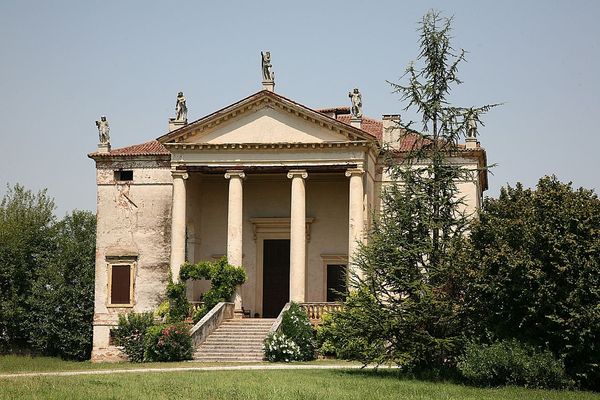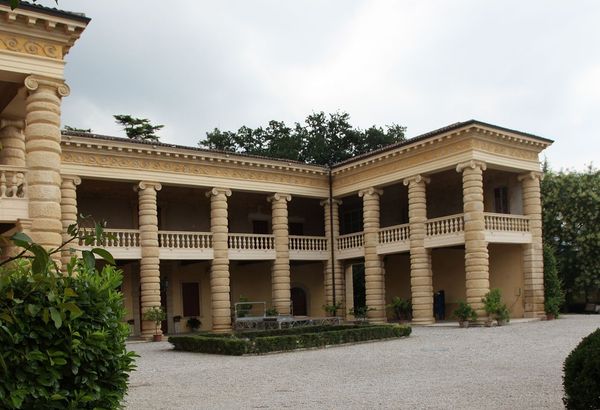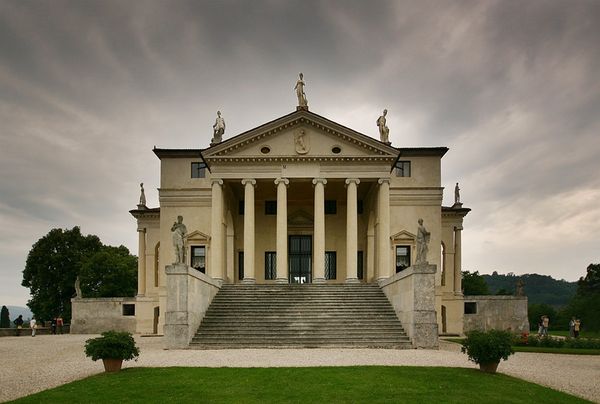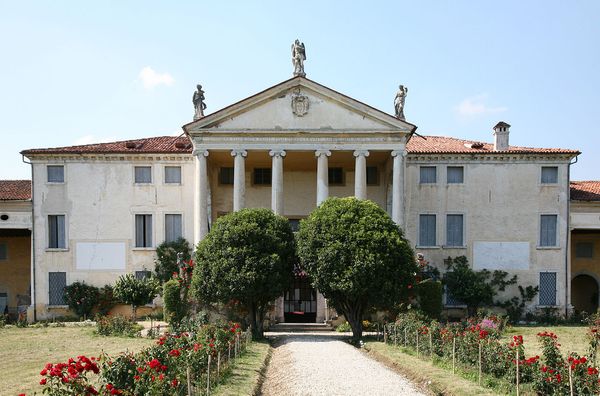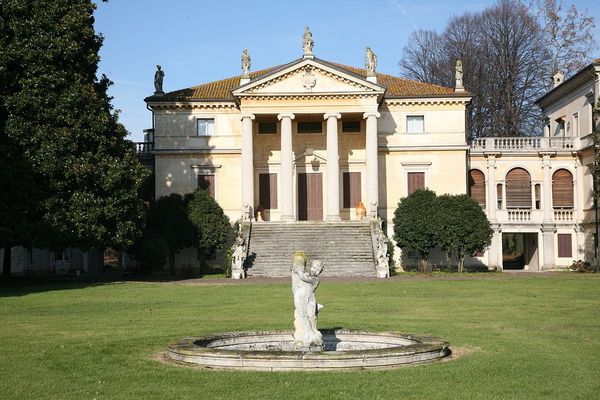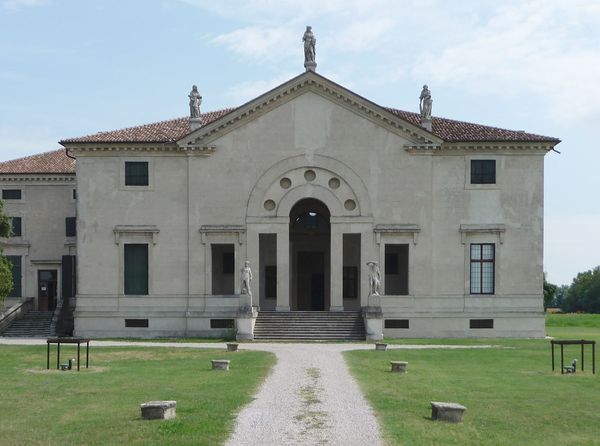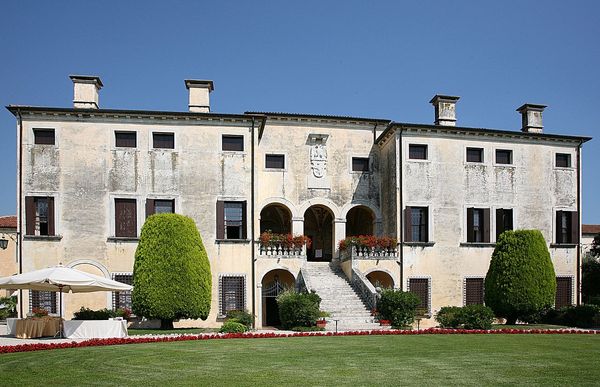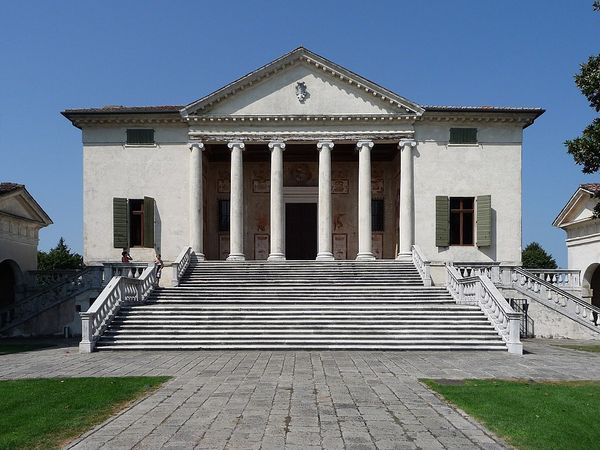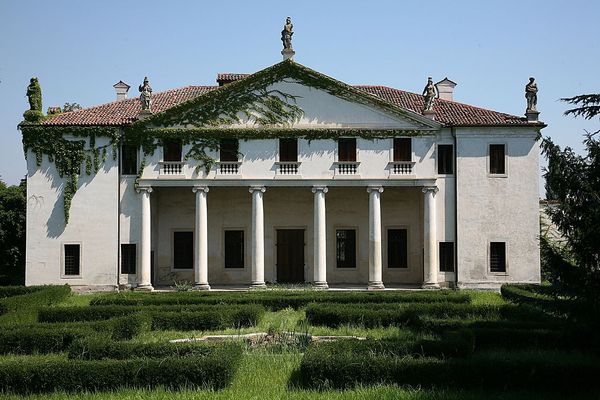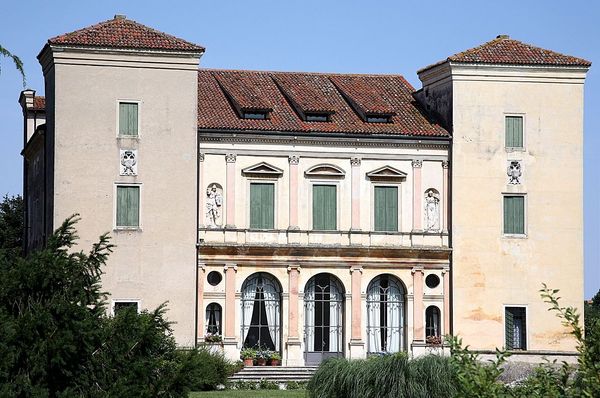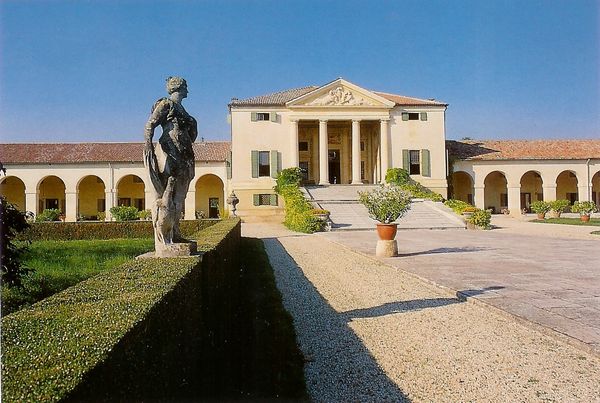
site-specific, architecture
#
landscape
#
classicism
#
site-specific
#
italian-renaissance
#
architecture
Copyright: Public domain
Editor: Here we have Andrea Palladio's Villa Barbaro, dating back to 1560. It’s a stunning example of site-specific architecture that immediately strikes me as a testament to the beauty of symmetry and classical forms. What significance does Villa Barbaro hold within its historical context? Curator: That's an excellent starting point. Villa Barbaro represents Palladio’s understanding of humanist ideals merging with practical concerns of land management and aristocratic display. This wasn't just a residence; it was a statement about the Barbaro family's sophisticated engagement with both the land and with Venetian society. Editor: I see. It's more than just a pretty facade. But how did this building interact with the broader political and social climate of the time? Curator: Consider the context. The Venetian Republic, though wealthy, faced challenges from both internal class dynamics and external threats. Patrons like the Barbaro family sought to solidify their positions through visible displays of wealth and culture. A villa like this, designed with Palladio’s learned classicism, subtly reinforced their ties to the established order. Editor: So, this was about projecting power, almost like propaganda through architecture? Curator: In a sense, yes. However, propaganda carries a negative connotation that simplifies its cultural role. Rather, think of it as cultural capital made concrete: demonstrating good taste, education, and a claim to cultural authority through the aesthetic language of classicism. Did the Villa’s landscape setting contribute to its political significance? Editor: Definitely, placing this classic design harmoniously within a rustic scene implies dominion of nature. This conversation really reshapes how I appreciate Renaissance architecture. Thanks! Curator: Precisely, its enduring presence and Palladio's later influence showcases how aesthetic preferences are woven into larger societal power structures.
Comments
No comments
Be the first to comment and join the conversation on the ultimate creative platform.

